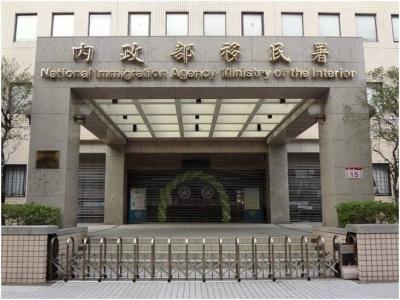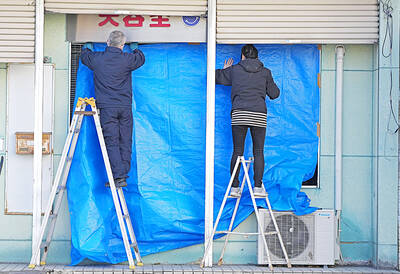In a long-awaited move to address the ever-increasing wealth gap in Taiwan, the Executive Yuan yesterday eased restrictions on subsidies to economically disadvantaged people, officials said.
Under the Cabinet’s amendment to the Social Assistance Act (社會救助法), the number of households living under a redefined poverty line — or “low-income families” — would increase by 52,000 people in 21,000 households. At present, 264,000 people in 108,000 households, or 1.36 of the population, fall into this category.
The draft also proposed defining in the act “middle-to-low-income families” to legally conceptualize the category currently defined in different ways in rules and regulations and to ensure that existing subsidies would be legally protected.
About 536,000 people in 183,000 households will be categorized as “middle-to-low-income families,” which, together with “low-income families,” would bring the number of people covered by the act to 852,000 in 312,000 households, or 3.68 percent of the population.
At present, the poverty line is set at 60 percent of the average per capita monthly living expenditure of a given administrative area over the most recent statistical year, with some restrictions relating to ownership of personal assets and real estate, among others.
If the amendment passes the legislature the standard would be defined as 60 percent of the median disposable income per capita per month of a given administrative area over the latest statistical year.
The new poverty line in the five administrative areas — Taipei City, Kaohsiung City, Lienchiang County, Kinmen County and Taiwan Province, which includes the remainder of cities and counties on the Taiwanese mainland — however, would be subject to a ceiling of 70 percent of the national median disposable income per capita.
At a press conference following the Cabinet meeting, Minister of the Interior Jiang Yi-huah (江宜樺) said each of the five administrative areas would have a new poverty line “higher than the current one by a range of between NT$400 [US$12.60] and more than NT$1,000.”
Citing Taipei City as an example, Chiang said the minimum living expense standard was supposed to be lifted from NT$14,614 at present to NT$16,793 after the adjustment.
“However, because of the ceiling restrictions, the new poverty line in Taipei City could be less than NT$16,793,” Chiang said.
Without a clear-cut legal definition of “middle-to-low-income households,” different government agencies apply various criteria to hand out subsidies to people living in middle-to-low-income families: Households whose average per capita income exceeds the minimum living expenses standard, but is no greater than two-and-a-half times the standard for the family’s area of residence.
To standardize the definition, the amendment stipulated that “middle-to-low-income households” would be defined as households whose average per capita income exceeds the poverty line, but is not greater than 1.5 times that standard for the family’s region of residence.
Chiang said the adjustments would cost the government an additional NT$4.35 billion in the first year of its implementation, expected to be 2012.
Reacting to the news, Taiwan Fund for Families and Children chairman Lin Po-jung (林柏榕) praised the revisions, but said the government should do more to help families living in poverty.
“The government must be very careful when putting the ideas behind the revision into practice and come up with more policies to help these families become financially independent,” Lin said.
While the government intends to include more people under welfare coverage, Lin said, the revisions could face some challenges in practice.
“Despite what the law says, most local governments — besides Taipei and Kaohsiung cities — do not have concrete policy plans to help economically disadvantaged families to become financially independent,” Lin said.
Meanwhile, Democratic Progressive Party legislators Huang Wei-cher (黃偉哲) and Wong Chin-chu (翁金珠) said they hoped the plan wasn’t just another “election gimmick” to gain votes for the Chinese Nationalist Party (KMT) in the November special municipality elections.
ADDITIONAL REPORTING BY LOA IOK-SIN AND YAN JUO-CHIN

A small number of Taiwanese this year lost their citizenship rights after traveling in China and obtaining a one-time Chinese passport to cross the border into Russia, a source said today. The people signed up through Chinese travel agencies for tours of neighboring Russia with companies claiming they could obtain Russian visas and fast-track border clearance, the source said on condition of anonymity. The travelers were actually issued one-time-use Chinese passports, they said. Taiwanese are prohibited from holding a Chinese passport or household registration. If found to have a Chinese ID, they may lose their resident status under Article 9-1

Taiwanese were praised for their composure after a video filmed by Taiwanese tourists capturing the moment a magnitude 7.5 earthquake struck Japan’s Aomori Prefecture went viral on social media. The video shows a hotel room shaking violently amid Monday’s quake, with objects falling to the ground. Two Taiwanese began filming with their mobile phones, while two others held the sides of a TV to prevent it from falling. When the shaking stopped, the pair calmly took down the TV and laid it flat on a tatami mat, the video shows. The video also captured the group talking about the safety of their companions bathing

A classified Pentagon-produced, multiyear assessment — the Overmatch brief — highlighted unreported Chinese capabilities to destroy US military assets and identified US supply chain choke points, painting a disturbing picture of waning US military might, a New York Times editorial published on Monday said. US Secretary of Defense Pete Hegseth’s comments in November last year that “we lose every time” in Pentagon-conducted war games pitting the US against China further highlighted the uncertainty about the US’ capability to intervene in the event of a Chinese invasion of Taiwan. “It shows the Pentagon’s overreliance on expensive, vulnerable weapons as adversaries field cheap, technologically

Starting on Jan. 1, YouBike riders must have insurance to use the service, and a six-month trial of NT$5 coupons under certain conditions would be implemented to balance bike shortages, a joint statement from transportation departments across Taipei, New Taipei City and Taoyuan announced yesterday. The rental bike system operator said that coupons would be offered to riders to rent bikes from full stations, for riders who take out an electric-assisted bike from a full station, and for riders who return a bike to an empty station. All riders with YouBike accounts are automatically eligible for the program, and each membership account